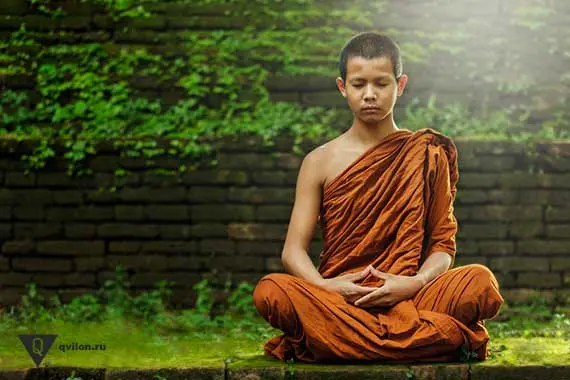Hello everyone, dear blog readers! You already know how much harm stress can cause, causing various diseases, shaking the sense of inner balance and, in general, developing into a prolonged depression, provoking suicide. It is not always possible to prevent it, as well as deal with the consequences, but knowing certain methods, such as breathing techniques for calming, for example, it is quite possible to do this.
General information
Let’s start with the fact that the state of the nervous system is very closely related to breathing, or to be more precise, with its frequency. Therefore, it is very important to observe the rhythm, depth and speed, because it depends on this whether you relax, or vice versa, become more active. It is not for nothing that women are taught proper breathing before childbirth, which helps to anesthetize and relax the body during contractions, and then during attempts.
Since today we are struggling with stress, you need to breathe slowly and measuredly, then you will fill every cell of the body with oxygen, which will help normalize pressure, help the nervous system return to normal and, of course, relieve muscle tension.
Types of breathing
- Clavicular — the uppermost part of the lungs is filled with air, while you can see how the shoulders and collarbones move. This type does not oxygenate our body at all and is used during meditation in order to concentrate on internal processes, gradually moving to deeper breathing.
- Thoracic — accordingly, the movement of the diaphragm is noticeable, the chest and ribs expand and narrow in the process. It also does not completely saturate the body, reaching only the middle of the lungs, leaving their lower part unfilled. Usually seen in women.
- Abdominal. The diaphragm goes down, and then the stomach protrudes, which most women are embarrassed by, choosing a more aesthetic chest type, therefore it is more natural for men.
- Complete — provides stress relief, as all of the above organs are involved. By saturating cells with oxygen, it improves not only physical health, but also emotional state.
Execution rules

- The rules are a bit similar to those that I have already given you in previous articles, for example in an article about the basics of the art of meditation.. Let me remind you that the posture should be comfortable for you, no matter if you prefer to sit or lie down in the process, the main thing is that your back is even.
- It is forbidden to practice on an empty or full stomach. It should be taken at least one hour after eating.
- In order not to be distracted and fully concentrate, it is recommended to close your eyes, and of course, not pay attention to the thoughts that arise in your head.
- For each of the exercises there should be at least 10 approaches, with breaks, in case you decide to try other techniques..
- Visualize each inhalation and exhalation, imagining how clean, warm and bright energy fills every part of your body, and dirty energy leaves the body. I wrote about visualization here «The simplest step-by-step and effective desire visualization techniques».
- The best effect will be if you place yourself on the street, in extreme cases near an open window.
- When dizziness appears, this indicates hyperventilation, that is, oversaturation with oxygen, take a break and breathe into your closed palms, the carbon dioxide released on exhalation will bring you back to normal.
Exercises
1.Sama-vritti
To begin with, let’s master the simplest, but at the same time effective method, which is called Sama-vritti. You should inhale through the nose, count to four, and only then exhale with the same count. Over time, you can increase the pauses, counting up to six or eight, as you feel more comfortable. By the way, it helps to distract yourself if you feel that you are losing control of yourself, especially at the time of conflict. Leave the room for a couple of minutes, do this exercise and then you will feel that you are calming down.
2. Gymnastics
And this gymnastics will help you relax just before the expected tense event, you just have to take care of the opportunity to lie down in advance, because standing will not have the same effect. Lie down, put one hand on your chest and the other on your stomach. After taking a very slow and deep breath, concentrate your attention on how the diaphragm rises, and oxygen saturates the entire body. In the same way, exhale slowly and measuredly. Consider to yourself that it takes at least 10 seconds for one inhalation-exhalation, since there should be no more than 8 of them per minute, optimally six.
3. Nadi shondhana

It helps to connect both parts of the brain together in one process, then a person achieves a sense of inner balance and balance. To do this, close one nostril with your hand and inhale through the free one, but at the end, when the lungs are almost full, you need to close the open nostril and exhale through the opposite one. Do this for 5 minutes at a comfortable pace.
4. Pranayama
There are very interesting breathing practices in yoga, which are called pranayama, which means control of vital energy. Ujjayi pranayama is very interesting. It is done in any position of the body, and is remarkable in that it is natural during sleep, when our consciousness is turned off. Therefore, it is also called mental breathing, which not only relaxes, but also helps with insomnia.
It is useful for sensitive people who perceive events too close to their hearts, which causes psychosomatic illnesses. Position yourself as you like, fill your lungs with air and release it through both nostrils, only slightly reducing the glottis. A barely audible hissing sound will indicate the correct execution, as if the kettle is starting to boil.
Breathing is required in stages, that is, starting from the collarbones, moving to the chest and abdominal view, focusing all attention on the sound that comes from the throat.
5. Another pranayama — Shitali
To do this, you need to sit in a comfortable meditative position, I talked about them in the article at the link above.. Closing your eyes, try to stick your tongue out so that there is no tension, and wrap it in a tube. If you don’t know how, just try to lift the sides up. And, as you guessed, air should be passed through this tube, only exhaled through the nose.
When performed correctly, you will hear a noise like a breath of wind, and the tip of the tongue will cool. Do at first no more than 9 times, eventually increasing the number of cycles up to 15 times. In summer, when it is very hot, this method will help to cool down a little. You already know that yoga is very good for the body, and its followers claim that by practicing Shitali, you can not only relieve tension, but also heal stomach ulcers, lower blood pressure and remove toxins.
6.Express method
If you urgently need to regain your ability to think clearly, getting rid of anxiety, anger and other experiences, this express method will suit you. It can be performed even while standing, unnoticed by others. You should take a deep breath, which should start from the abdomen, moving into the chest, then into the collarbones. That is, perform the wave in reverse, which takes two seconds in time. Then hold the air for five seconds, and exhale it, also counting to five. After a pause, again in 5 seconds, repeat all over again. Only 6 approaches, and you will be calm.
7. If you have a busy day ahead
Try this exercise in the morning as soon as you wake up. So you fill every cell with oxygen and energy, which is enough to cope with the upcoming difficulties without harm to health.
It is necessary to stand straight, straighten your shoulders and press your hands to your body. Close your eyes and take a measured, calm breath, rising on your tiptoes. Hold for two to three seconds, and then also slowly lower yourself to a full foot. It is enough to perform six times, only now alternately rising on the left, then on the right foot.
8. Tibetan techniques

They help to strengthen the nervous system, only they need to be performed every day. You can start with holding your breath, which is of two types:
- Empty lungs. As you exhale, draw in your stomach as much as possible to feel how the muscles tense up, starting from the pubis and ending with the navel.
- Full. In the same way, we draw in and strain the stomach, only the air must not be completely released, but part of it must be kept in the lungs for about four seconds.
9. Ordinary yawning will also help us relax.
It occurs in us when the body is oversaturated with carbon dioxide, which it becomes possible to get rid of through this process. Yawning releases tension from the facial muscles and helps renew the air in the chest. So open your mouth wide and allow yourself to yawn as many times as it takes to feel relaxed.
10. In especially difficult critical situations, you can connect affirmations
I talked about them in the article «How to program yourself for success with the help of affirmations.» You should close your eyes, take a deep breath and say to yourself “I calm down” or “I relax”, it is important that the second part of the sentence already sounds on the exhale. Repeat at least 6 times.
Conclusion
And that’s all for today, dear readers! Try to perform all of the above exercises, focusing on the most comfortable and easiest for you. Take care of yourself and be calm!









